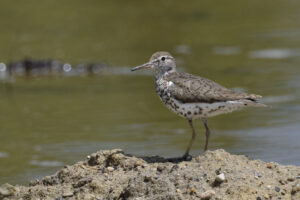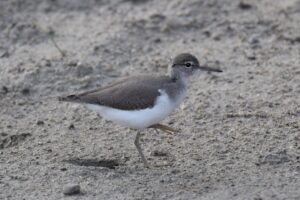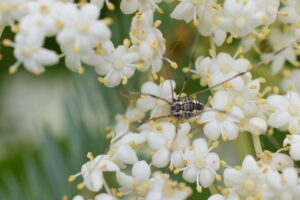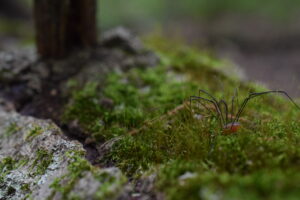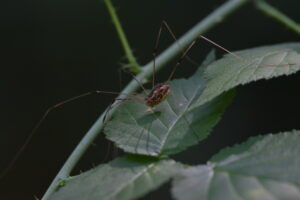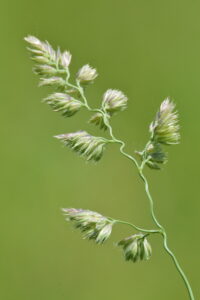Back in 2021 we started some native wildflowers from seeds. Since they are perennials they didn’t really fill out until the next year, though a few plants produced a scattering of flowers in their first year. One of of the species we planted was the aromatic aster. I chose it because it was supposed to be an especially late blooming and drought tolerant species (we’re mostly in a wetland, but had one dry area to plant) and by early November of last year it was the last aster still blooming. (To be fair, the most exuberantly blooming plant was in a favorable spot for soaking up late day warmth, and nicely mulched, which does help extend the growing season.) It was also one of the last few flowers blooming in general, so not surprisingly, it attracted the attention of all the remaining pollinators and concentrated them in a small patch of flowers. In particular, the asters were covered in bumble bees.

It was pretty easy to get some good pictures of the bumble bees since there were a whole bunch of them and they didn’t seem at all concerned about having a camera right next to them.
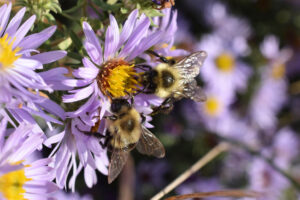
So many bees concentrated together in this patch sometimes led to bees foraging in close quarters…
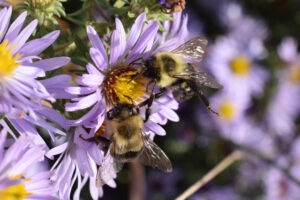
These two got a little too close, and are trying to fend each other off here.

This little halictus bee also wasn’t too comfortable with having a big bumble bee wandering up behind him.
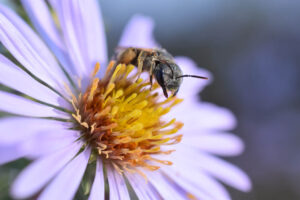
Another halictus bee resting on a flower. She hung out on this flower for quite a while.
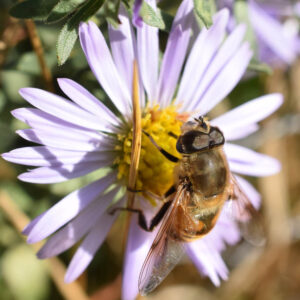
There were a couple of drone flies hanging out in the midst of all the bees. Drone flies are a type of hover fly, also known as flower flies (and both names are quite accurate).

After the encounter with the bumble bee this halictus bee decided to groom himself and have a little rest, giving me a particularly good opportunity to take his portrait.
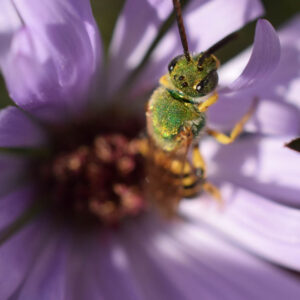
There were a few of these tiny, colorful agapostemon bees darting around. They’re tricky to photograph because they’re fast, but I noticed they would pause and rest every once and a while, so I managed to get a couple nice pictures of them.
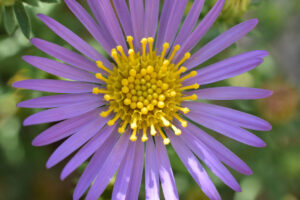
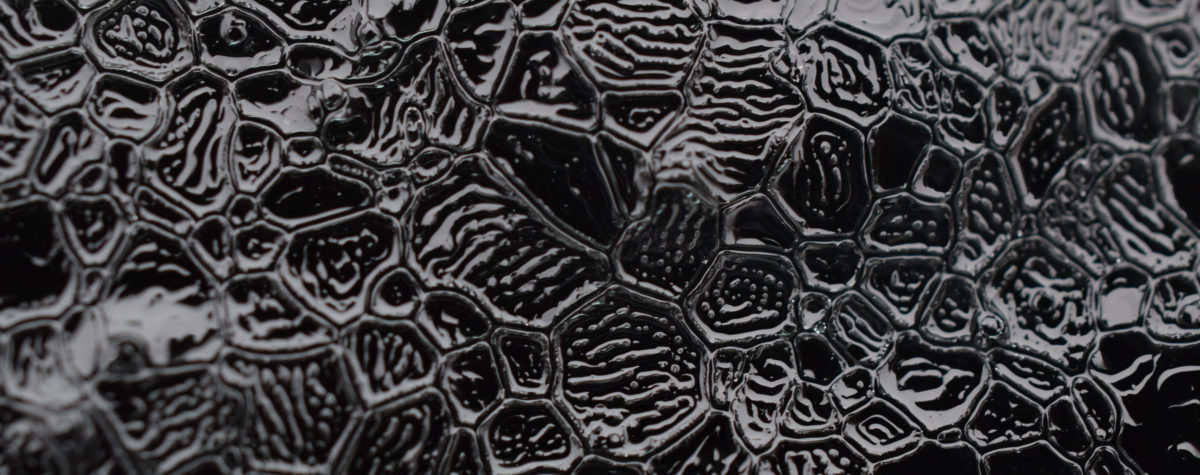
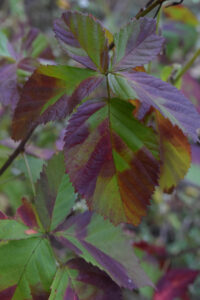
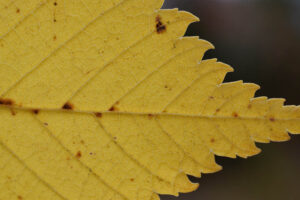
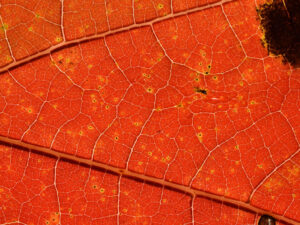
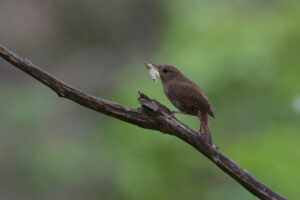
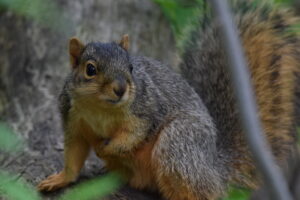
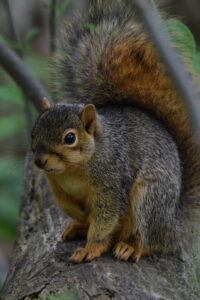
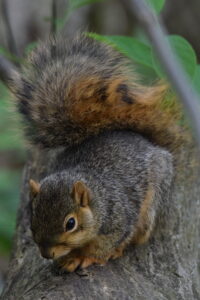

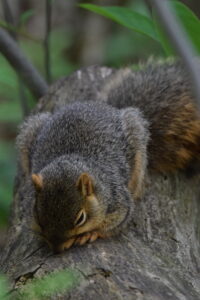

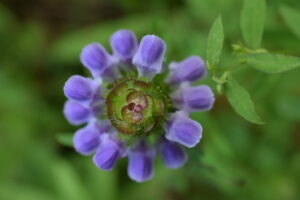
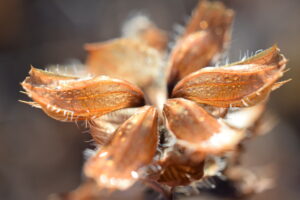

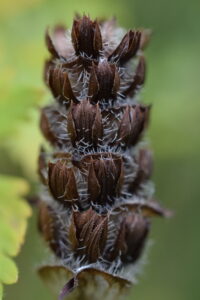
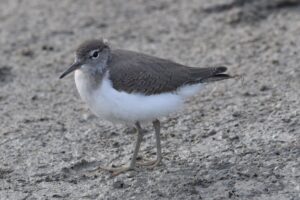 This little sandpiper landed not too far from me while I was out with my camera one day. I didn’t immediately recognize this as a species I’d seen before because it looks quite a bit different from the last one I photographed:
This little sandpiper landed not too far from me while I was out with my camera one day. I didn’t immediately recognize this as a species I’d seen before because it looks quite a bit different from the last one I photographed: